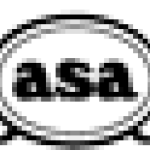- Industri: Aviation
- Number of terms: 16387
- Number of blossaries: 0
- Company Profile:
Aviation Supplies & Academics, Inc. (ASA) develops and markets aviation supplies, software, and books for pilots, flight instructors, flight engineers, airline professionals, air traffic controllers, flight attendants, aviation technicians and enthusiasts. Established in 1947, ASA also provides ...
An inspection of an aircraft performed by the pilot or flight engineer before the aircraft is approved for flight. The purpose of a preflight inspection is to assure that the aircraft is in a safe condition for the flight being proposed.
Industry:Aviation
An inspection program that is part of a continuous airworthiness maintenance program approved for certain large airplanes (to which 14 CFR Part 125 is not applicable), turbojet multiengine airplanes, turbopropeller-powered multiengine airplanes, and turbine-powered rotorcraft.
Industry:Aviation
An inspection required by 14 CFR
91.409 for FAA-certificated aircraft that are operated for hire, or are used for flight instruction for hire.
A 100-hour inspection is identical in content to an annual inspection, but it can be conducted by an aircraft mechanic who holds an Airframe and Powerplant rating, but does not have an Inspection Authorization. A list of the items that must be included in an annual or 100-hour inspection is included in 14 CFR 43, Appendix D.
Industry:Aviation
An inspection that may be used in place of an annual or 100-hour inspection. It has the same scope as an annual inspection, but it may be performed in increments so the aircraft does not have to be out of service for a lengthy period of time.
Industry:Aviation
An instrument approach in which the air traffic controller issues instruction, for pilot compliance, based on the aircraft position relative to the final approach course (azimuth) and the distance (range) from the end of the runway as displayed on the controller’s radar scope. The controller will provide recommended altitudes on final approach if requested by the pilot.
Industry:Aviation
An instrument approach in which the final approach is begun without first executing a procedure turn. A straight-in approach is not necessarily completed with a straight-in landing, nor is it made to straight-in landing minimums.
Industry:Aviation
An instrument approach performed by the aircraft autopilot which is receiving position information and/or steering commands from on-board navigation equipment.
In general, coupled nonprecision approaches must be discontinued and flown manually at altitudes lower than 50 feet below the minimum descent altitude, and coupled precision approaches must be flown manually below 50 feet AGL.
Industry:Aviation
An instrument approach procedure conducted by a VFR or an IFR aircraft for the purpose of pilot training or proficiency demonstrations.
Industry:Aviation
An instrument error that causes a difference in the readings of an instrument when the indicated values are increasing, compared with the readings at the same point when the values are decreasing. Hysteresis error is caused by internal friction in the instrument mechanism.
Industry:Aviation
An instrument installed in many aircraft to show the actual number of hours the engine has operated. The hourmeter is an electrical clock that starts when the engine oil pressure builds up, and runs until the engine is shut down and the oil pressure drops to zero.
Industry:Aviation
